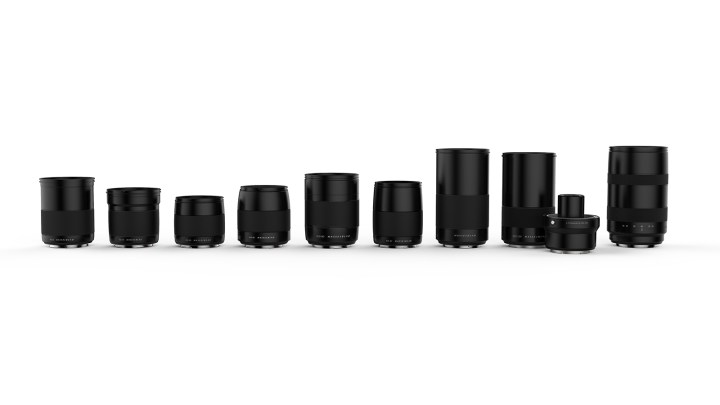
The new 135mm will have a bright f/2.8 aperture and will also ship with a teleconverter that allows the lens to shoot as a 230mm f/4.8, adding more versatility to the prime lens.
Details are a bit more scarce for the XCD 80mm without details on the aperture, but Hasselblad says the lens will have the brightest aperture the company has introduced yet. The XCD line’s brightest aperture is a f/2.8.

The company also shared additional details on previously announced lenses. The XCD 22mm ultrawide-angle lens is being upgraded to a 21mm lens and will have a f/4.0 aperture. The slightly wider angle is to meet user demand for better wide angle lenses, the company says.
The previously announced XCD 35-75mm zoom lens will have a f/3.5-4.5 maximum aperture, while the XCD 65mm will have a bright f/2.8.
Like all XCD lenses, Hasselblad says the new lenses will use a central shutter with a wide range of shutter speeds along with flash synch up to 1/2000.
Except for the 80mm, all of the new lenses will launch in the first half of 2018, Hasselblad says, while the 80mm will come sometime in the second half of the year.
The upcoming lenses will bring the XCD lens count to nine, including the 120mm macro that’s now shipping globally after more than expected pre-orders. In our Hasselblad X1D review, the lack of bright aperture lenses is a low point for the camera, so the launch of both additional focal lengths and brighter apertures should help expand the capabilities of the medium format mirrorless.
Editors' Recommendations
- Olympus OM-D E-M1 Mark III vs. OM-D E-M1X: High-performance flagships compared
- Canon EOS-1D X Mark III brings stunning stills and RAW video to an impressive DSLR
- Hasselblad’s sleek new X1D II 50C is faster and cheaper (and looks great)




